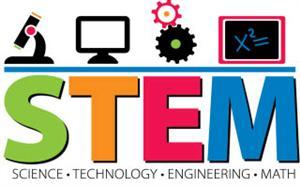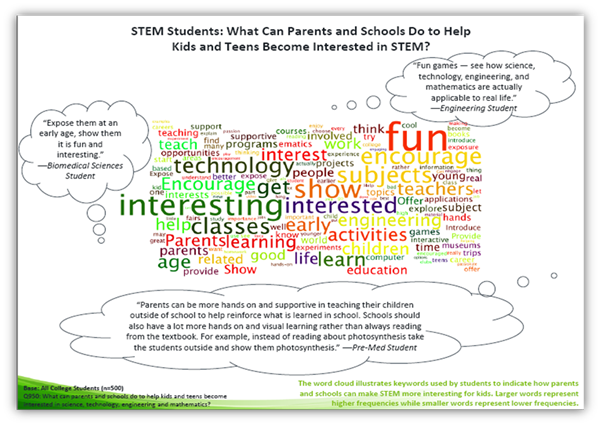- Erie's Public Schools
- Participating Schools & Lessons
- JoAnna Connell School
-

 Joanna Connell is a K-8 school that is in its third year of incorporating STEM into their curriculum. Before implementing STEM, a team of teachers attended a GE conference in Cocoa Beach, Fl. The team gained valuable knowledge of STEM and how to implement it into Joanna Connell School. Part of the training was at Kennedy Space Center where they applied their newly learned knowledge by completing different STEM design challenges. After the training the team brought back valuable information for the staff. During the first year of incorporating STEM, Connell started out small.Grade 6 began incorporating STEM challenges into their science lessons. At the beginning of the second year of STEM, teachers were given a design challenge during a faculty meeting. They were given an engineering design challenge by building a spaghetti tower using limited supplies. This design challenge was a huge success and the Connell faculty caught the STEM bug and started incorporating STEM challenges into their lessons. In the middle of the school year a group of teachers were selected to attend the NSTA National conference in Boston, Ma. Educators from all over the nation attended the conference. The team benefited from the professional development and it allowed them to collaborate with other teachers and enhance their teaching practices for the benefit of their students. Now, Connell is in its third year of STEM. They are focusing on developing STEM Units around their math curriculum to enhance what is already being taught. Teachers are working collaboratively to design STEM lessons that involve real life connections. The lessons for the Units occur over several class periods and the students are responding with great enthusiasm.
Joanna Connell is a K-8 school that is in its third year of incorporating STEM into their curriculum. Before implementing STEM, a team of teachers attended a GE conference in Cocoa Beach, Fl. The team gained valuable knowledge of STEM and how to implement it into Joanna Connell School. Part of the training was at Kennedy Space Center where they applied their newly learned knowledge by completing different STEM design challenges. After the training the team brought back valuable information for the staff. During the first year of incorporating STEM, Connell started out small.Grade 6 began incorporating STEM challenges into their science lessons. At the beginning of the second year of STEM, teachers were given a design challenge during a faculty meeting. They were given an engineering design challenge by building a spaghetti tower using limited supplies. This design challenge was a huge success and the Connell faculty caught the STEM bug and started incorporating STEM challenges into their lessons. In the middle of the school year a group of teachers were selected to attend the NSTA National conference in Boston, Ma. Educators from all over the nation attended the conference. The team benefited from the professional development and it allowed them to collaborate with other teachers and enhance their teaching practices for the benefit of their students. Now, Connell is in its third year of STEM. They are focusing on developing STEM Units around their math curriculum to enhance what is already being taught. Teachers are working collaboratively to design STEM lessons that involve real life connections. The lessons for the Units occur over several class periods and the students are responding with great enthusiasm. Mars Buggy Design ChallengeStudents will design and build a model of a Mars Buggy that will carry equipment and astronauts on the surface of Mars to a Mars Colony. Students will work in groups to design and create a Mars Buggy from scratch. After creating the Mars Buggy, students will test how far the buggy will travel down a ramp. The goal is to have the buggy travel, in a straight line, a minimum of 100 cm with all cargo and astronauts safely intact. The students will make corrections as well as finding the Mean, Median, Mode, and Range of the distances traveled.Cooking with STEMStudents in grade 6 had an introduction to STEM and its concepts. This Unit covers the conversions of fractions, mixed numbers, whole numbers, and heat transfer when cooking (conduction, convection, and radiation.)Below is a list of the STEM activities for this Unit:October 3: Introduction to STEM & Math conversionsOctober 10: Food Safety/Food Handling- (Guest Speaker from Metz)October 16: Recipe/Materials List Creation- Chili, cheesecake brownies, & corn breadOctober 24: Cooking of Recipes (with parent volunteers)October 30: Journal Update/ Discussion/ General RegroupingNovember 7: Creating Models of Products- Using modeling clayNovember 14: Field Trip: TOPS- Package Design to MarketNovember 21: Package designDecember 5: Plan for Marketing for commercialsDecember 11: Commercial PrepDecember 12: Taping of CommercialsDecember 19: Commercial SharingPicture FramesIn an effort to incorporate the reality of fractions in the real world, as well as working on the concept of equivalent fractions, we developed a STEM unit that blends the “design” component of the MOTION AND DESIGN module with introduction to fractions.
Mars Buggy Design ChallengeStudents will design and build a model of a Mars Buggy that will carry equipment and astronauts on the surface of Mars to a Mars Colony. Students will work in groups to design and create a Mars Buggy from scratch. After creating the Mars Buggy, students will test how far the buggy will travel down a ramp. The goal is to have the buggy travel, in a straight line, a minimum of 100 cm with all cargo and astronauts safely intact. The students will make corrections as well as finding the Mean, Median, Mode, and Range of the distances traveled.Cooking with STEMStudents in grade 6 had an introduction to STEM and its concepts. This Unit covers the conversions of fractions, mixed numbers, whole numbers, and heat transfer when cooking (conduction, convection, and radiation.)Below is a list of the STEM activities for this Unit:October 3: Introduction to STEM & Math conversionsOctober 10: Food Safety/Food Handling- (Guest Speaker from Metz)October 16: Recipe/Materials List Creation- Chili, cheesecake brownies, & corn breadOctober 24: Cooking of Recipes (with parent volunteers)October 30: Journal Update/ Discussion/ General RegroupingNovember 7: Creating Models of Products- Using modeling clayNovember 14: Field Trip: TOPS- Package Design to MarketNovember 21: Package designDecember 5: Plan for Marketing for commercialsDecember 11: Commercial PrepDecember 12: Taping of CommercialsDecember 19: Commercial SharingPicture FramesIn an effort to incorporate the reality of fractions in the real world, as well as working on the concept of equivalent fractions, we developed a STEM unit that blends the “design” component of the MOTION AND DESIGN module with introduction to fractions.- We will be using Cuisenaire Rods, graph paper, and exemplary models with directions drawn to “scale”, to make the progression from concrete to more abstract, and then to application.
- The students will use the Cuisenaire Rods to explore the concept of equivalent fractions and enlarging and reducing measurements by ratios. They will then move into models on graph paper using the rods.
- Application will then be to design a “picture frame” on centimeter graph paper, using the rods as their units. They will then construct the frames using foam pieces that are the same size and decorate them as they see fit.
- Next, they will write directions on how to construct that exact frame, along with a scale drawing on smaller graph paper that uses the reduced fractions of the dimensions they actually constructed. The directions, graphic scale drawings, and all necessary pieces will be put into a bag as a product.
- Finally, each student’s final product will be given to a younger student who will have to build their product using the directions they have written, as well as the scale drawings included with the model.
- Within the unit, we have scheduled a guest speaker from GE to share the process of drafting and drawing scale models, while highlighting the math that is entailed in the process.
Grade 1 STEM Mini UnitThis mini unit is designed to enhance what the students are learning in math and applying it to the science curriculum. The students are building a loop and hill so a car can gain enough speed to go down the hill and successfully complete the loop. The students are using blocks to raise the height of the. The students are using their math knowledge of addition and subtraction to successfully complete the task. 5th grade is assisting 1st grade with this Unit.- February 27 Lesson 1: Introduction- Balancing shapes to add doubles in equations.
- March 5 Lesson 2: Balance scale addition and subtraction to find missing addend.
- March 13 Lesson 3: Repeating addends on the calculator to equal a specific sum.
- March 20 Lesson 4: Building the loop and hill and using a marble to determine height of loop, speed, etc.
- March 26 Lesson 5: Writing and illustrating a summary of the unit.
We look forward to continuing our expansion of STEM units at Connell as well as growing our partnerships with organizations like FMC Technologies who generously support our projects and are quick to loan us an engineer when needed.

